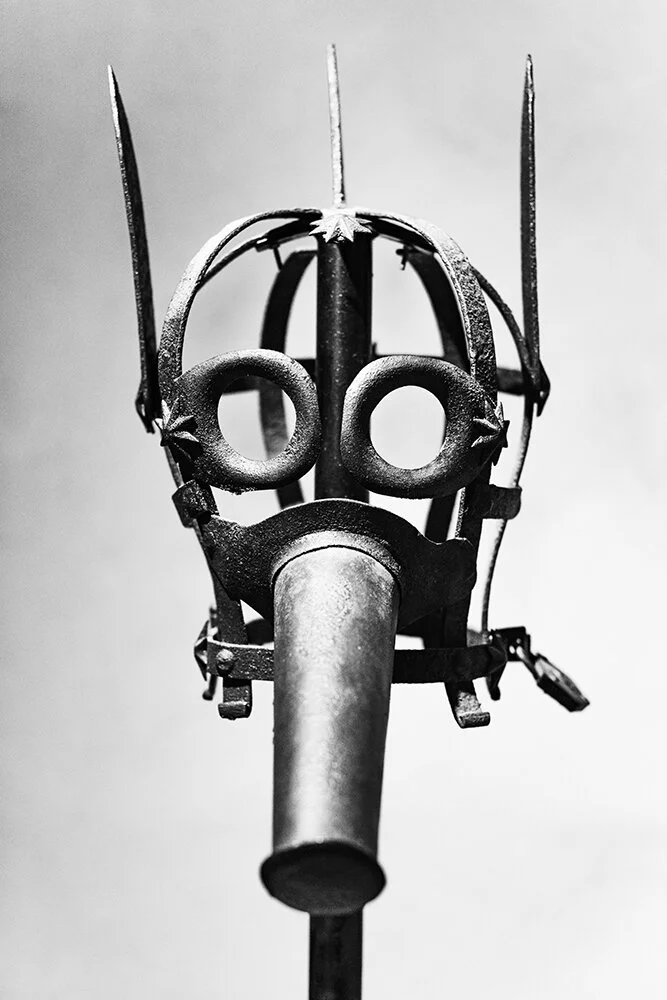Women's History Month: Laia Abril
Laia Abril, Chastity Belt © courtesy Les Filles du Calvaire
Text by Lara Southern
In her latest exhibition, On Rape, Spanish photographer Laia Abril creates a narrative calling out institutional rape culture and victim-blaming, phenomena that are all too prevalent around the globe.
Laia Abril, Ala Kachuu, [Bride Kidnapping], Kyrgyzstan © courtesy Les Filles du Calvaire
Abril’s catalyst for creating the series the gang rape of an eighteen-year-old woman in 2018. The perpetrators of the crime were initially set free, after being charged with the lesser offense of abuse rather than rape. The incident sparked a massive feminist movement — the largest in Spain’s history — and called into question national legislation surrounding women’s rights and safety.
Laia Abril, Military Rape, US © courtesy Les Filles du Calvaire
Marrying art and activism, On Rape marks the second chapter of A History of Misogyny, Abril’s long-term visual research project that investigates the legislative and social origins of patriarchal attitudes that still exist today. Through intensive personal research, Abril identified an astonishing wealth of evidence of the systemic reinforcement of gender stereotypes, as well as patterns of victim-blaming from around the world.
Laia Abril, Church Rape, Argentina © courtesy Les Filles du Calvaire
Abril’s early training as a journalist is visible in the layout of the series, which features testimonies, framed facts and quotes, archive material, and various other relevant objects in addition to her photographs. The black and white photos depict sets of clothing that “together with testimonials [hung above them], symbolise the different systemic rape cultures”. These conceptual portraits force the viewer to “face the institutions that not only allowed sexual violence to happen, but also prevent its justice later”.
Laia Abril, Mulier Taceat in Ecclesia © courtesy Les Filles du Calvaire
If Abril’s intent is to unsettle her audience, she achieves it, yet does so without explicitly representing the overt violence associated with rape. Each individual experience is given context in fact and history, forcing us to confront rape as a normalized occurrence. One photograph features an exquisite wedding dress representing a woman named Alina, a victim of ala kachuu, a form of bride kidnapping still practiced in Kyrgyzstan. In another, we find the military uniform representing Meredith, who spent a year being raped by her commander, keeping silent so as not to appear “weak and emotional.” Beyond the institutions of marriage and the military, Abril highlights these same violations practiced in the church, capturing in one photo the habit of a mother superior who abused her novices.
Laia Abril, Merkin © courtesy Les Filles du Calvaire
Though these portraits evoke the dark and discomfiting realities of gender inequality around the world, Abril also highlights resistance movements that work to fight these systemic injustices. Her exhibition displays items like a wooden weapon used by the Gulabi vigilante women of India to beat rapists and projects scenes of various revenge movies including Ms .45 and I Spit on Your Grave.
Laia Abril, Shrinky Recipe © courtesy Les Filles du Calvaire
Abril emphasizes the collaborative nature of this series, having taken two years to build up enough trust with subjects for them to send her their clothing. The thoroughness and depth of her research was important to her, the project being more than merely capturing a collection of personal traumas. She wanted to examine the broader impact of rape, to “understand why some institutional structures of justice, law, and policy were not only failing survivors but actually encouraging perpetrators by preserving particular power dynamics and social norms.” The result of this examination is a show that eschews drama for the sake of a deeper, less sensationalionalized emotional impact—a respectful deliverance of individual stories, in ways “that people would be able to relate to,” and which places them in a narrative that treats the institutionalization of rape as fact, rather than opinion.
On Rape is currently showing at Foam through June 27th.




![Laia Abril, Ala Kachuu, [Bride Kidnapping], Kyrgyzstan © courtesy Les Filles du Calvaire](https://images.squarespace-cdn.com/content/v1/5702ab9d746fb9634796c9f9/1614795544879-44MSFMO19OKEHEXTONQC/01+ALA+KACHUU.jpg)









